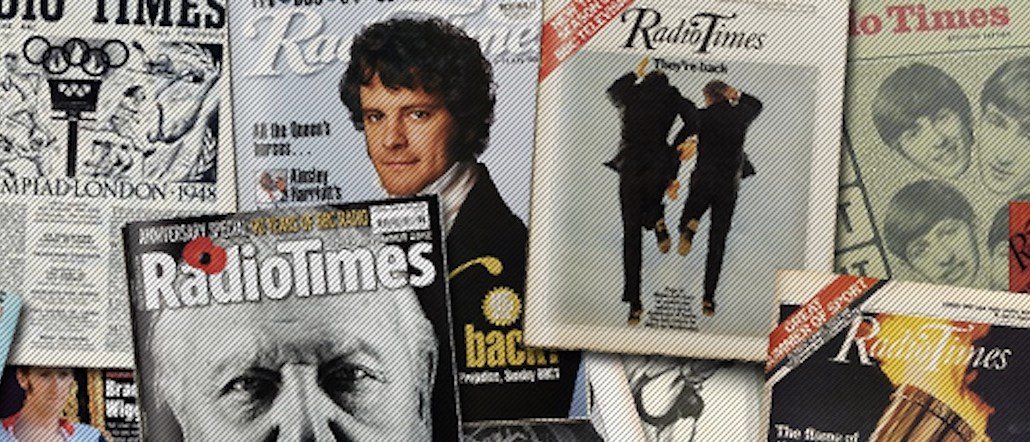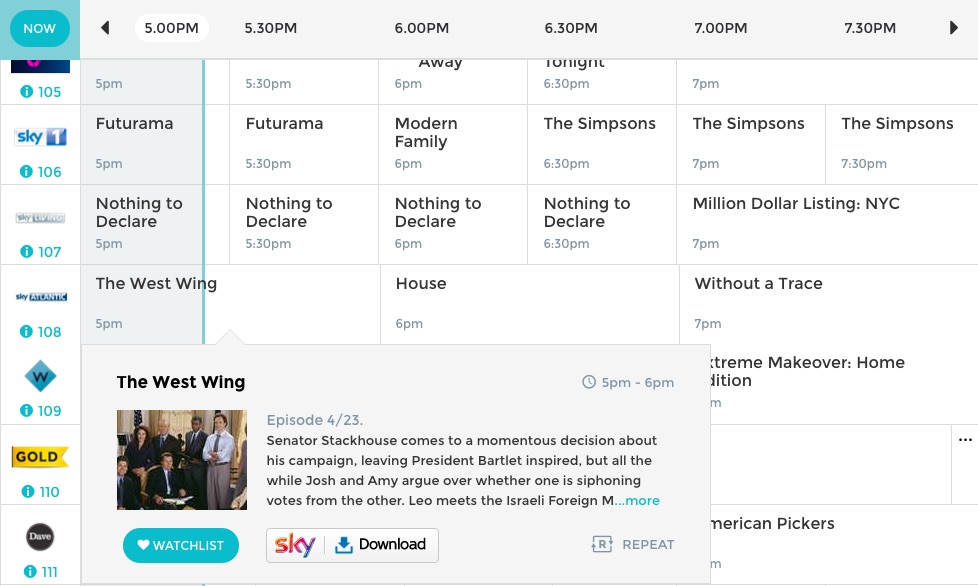How the Radio Times, the TV Guide of the UK, is drawing a younger web audience

The U.K.’s Radio Times, the world’s first broadcast listings magazine when it was founded in 1923, has been making a play for younger audiences online.
The weekly print magazine is still the publisher’s dominant force, with a circulation of 788,000 copies (approximately 31 percent are subscribers) selling at £2.30 ($2.99) per issue. But the average print reader is 57 years old.
While the Radio Times magazine still has a strong print presence on U.K. coffee tables, it needs to think about where the next generation is coming from if it wants to last through the next hundred years. The problem is that many sources offer TV listings now and TV watching habits are evolving.
In 2011, when Immediate Media acquired the BBC Magazines division, and with it Radio Times, the site posted only TV listings and struggled to get above the 2 million monthly unique mark, according to Google Analytics. Dozens of print journalists produced longer-form features for the magazine, barely any of which crossed over to the web. After the acquisition, the digital editorial team of 13 introduced more editorial content through articles, recaps, reviews and listicles with punchier headlines than in print. In the last year, the Radio Times has further honed its editorial strategy
“We’re being more strategic about what the audience wants to find out about,” said Stuart Forrest, digital publisher at the Radio Times. “Content is now generating 20 percent more pageviews per article compared to last year,” although he declined to break out the statistics. The amount of content remains steady at 35 stories a day, around content verticals like sci-fi, entertainment and food. “For the most part, it’s that our content is generating far more search traffic.”
Search is by far the Radio Times’ biggest traffic source: According to analytics firm SimilarWeb, 34 percent of the Radio Times’ traffic comes from search (the publisher said this is grossly understated, but it wouldn’t give out the exact figure).
For the current hit show “Victoria,” an ITV program about the late monarch that debuted last month, the edit team created service content (e.g., “What time is it on?” and “Should I watch?”) and stories explaining the historical context. It commissioned content to suit the public’s interest in the real-life characters, like “Meet the real-life Lord Melbourne” and “The real story of Queen Victoria and Prince Albert’s romance.” On the first day of the show’s broadcast at the end of August, eight out of the Radio Times’ top-10 performing news stories were about “Victoria.”
“Radio Times has heritage around traditional, nostalgic, British shows like the ‘Great British Bake Off,’ ‘Downton Abbey’ and ‘Victoria,'” said Alex Smith, head of digital planning at Maxus. “This content will naturally gravitate to the top of search results, and the audience demand for those shows is stronger now than ever.”
It’s also broadening its proposition by creating more sports content. During the Olympics, the edit team looked at the key search terms that were coming out of the search metrics data and created landing pages for events that had the most volume of search queries.
Optimizing for search will pull in traffic around popular shows, but this audience isn’t necessarily going to be loyal to the brand, a challenge Radio Times is aware of. “We are responding to the changing TV-consumption habits in the content that we cover, things like Netflix, Amazon Prime, Marvel,” said Forrest, “and also in making our TV listing platform more useful.”
TV listings still generate 55 percent of the pageviews on the site. Through noncommercial partnerships with BBC iPlayer and Amazon, viewers can browse the listings and actually watch a show straight from the listings. More recently, a Sky integration means that people with a Sky account can set their set-top box to record a program straight from the listing or set it to download. While it’s popular, Forrest couldn’t say how many use the service. But in the last year, the number of 25- to 34-year-olds visiting the site has grown by 42 percent. Now it makes up 21 percent of the site’s 8 million monthly uniques, according to Google Analytics. Other age groups to the site make up roughly 16 percent each.

There is still some way to go. “There’s a sense it has been slightly living off its heritage,” said Jamie Dunlop head of publishing at agency Total Media. “The product is good, the audience is good. I can see ads from a fashion brand, a sports brand, an energy drink and a broadcaster. They are clearly creating a diverse environment for advertisers. They need to be having those conversations that it’s suited to younger audiences with agencies.”
Social is an opportunity: It has a slim presence, with 175,000 followers on Facebook and 76,000 followers on Twitter. Forrest admits that the Radio Times has not been as reliant on social traffic as other publishers, but this has protected the publisher from Facebook’s capricious algorithm changes. Still, the publisher is exploring opportunities with Instant Articles.
“On Snapchat Discover, there are already people telling you the top-10 Netflix shows to watch,” said Maxus’ Alex Smith. “There are Facebook bots, YouTube reviews; people cast wide nets. Viewers will discover the content where they are, the Radio Times needs to make sure it’s there.”
Image: courtesy if the Radio Times.
More in Media

Amid ban uncertainty, TikTok’s role in brands’ social presences has decreased
Even if TikTok finds a path forward in the U.S., brands and agencies that were previously focused on the platform have learned that this approach is vulnerable to the whims of platforms and regulators.

Digiday+ Research: Subscriptions and events gain steam among publishers’ most significant sources of revenue
Direct-sold ads continue to be the dominant source of publishers’ revenue as we move out of the first quarter. But other revenue sources are gaining in importance, particularly subscriptions and events.

Media Briefing: Apple News ad monetization still ‘abysmal’ for some
Publishers still can’t make meaningful ad revenue from Apple News despite its push to sell more ad inventory.





